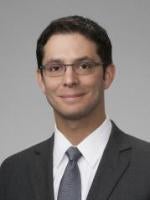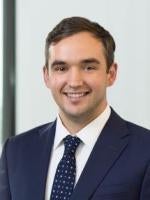Delaware Judge Brendan Shannon has joined calls for reforming Section 546(e) of the bankruptcy code, echoing concerns that the section's safe harbor from fraudulent transfer liability has allowed investors to "loot privately held companies to the detriment of their non-insider creditors with effective impunity." [1]
Judge Shannon is the second judge to recently press Congress to narrow section 546(e)’s safe harbor. In October 2022, Judge Robert Drain warned, in his final opinion from the bench, that section 546(e)’s overbroad exemption has enabled private equity companies to siphon billions in debt-funded dividends from the companies they own, often at the expense of other creditors. Judge Drain urged Congress to limit section 546(e) to public transactions. [2]
In Quorum Health, Judge Shannon granted a motion to dismiss fraudulent transfer claims because section 546(e) “constrained” the court, despite plausible allegations that the defendants “constructed a scheme for the purpose of siphoning funds from the Debtor for the Defendants’ benefit.”
Judge Shannon then cited to Judge Drain’s final opinion before leaving the bench, In re Tops Holding II Corp., 646 B.R. 617 (Bankr. S.D.N.Y. 2022), in which Judge Drain calls for the 546(e) exemption to be limited to public transactions. He concluded: “The undersigned agrees with Judge Drain's concerns and sentiments.”
Section 546(e) of the Bankruptcy Code protects transfers made to financial participants in connection with a sale of securities from being unwound as fraudulent transfers. The section was created to ensure certainty in financial markets, but, according to some of the nation’s premier bankruptcy judges, its broad wording means it may be applied to situations where there is little risk that the transfers could undermine financial certainty.
Judge Shannon’s Quorum Health opinion arose from the April 7, 2020, bankruptcy filing of Quorum Health Corp. and 134 of its related entities. The Delaware bankruptcy court confirmed the Quorum debtors’ joint prepackaged plan of restructuring on June 30, 2020. That plan established the QHC Litigation Trust at the request of certain senior note holders, which was tasked with investigating the Debtors’ causes of action.
On October 25, 2021, the trustee of the QHC Litigation Trust filed a complaint against Community Health Systems, Inc. (“CHS”) and other defendants. The complaint attacked the 2016 spinoff that carved Quorum from CHS on several grounds, including allegations that the transaction was a fraudulent transfer and included an illegal dividend under state law. The CHS defendants filed a motion to dismiss several of these counts, and the trustee opposed the motion.
According to the allegations in the complaint, the Quorum Health bankruptcy was a direct result of the 2016 spinoff. That spinoff established Quorum and contributed assets into it including 38 CHS hospitals primarily located in rural areas. The terms of the spinoff were governed by the Separation and Distribution Agreement (the “SDA”), which transferred equity in the hospitals from CHS to Quorum.
As part of the transaction, Quorum used its newly transferred assets to incur more than $1.2 billion in debt, including $400 million in unsecured senior notes, $880 million of senior term loan credit facilities, a revolving credit facility of up to an aggregate of $100 million, and an asset-based revolving credit facility providing up to $125 million. According to the pleadings, the proceeds of this debt were then sent back up to parent CHS as a dividend (the “Spin-Off Dividend”). The dividend was paid to CHS’s wholly owned indirect subsidiary BridgeCo, which then merged into CHS-2, which is also owned by CHS. The complaint alleges that when the transaction closed and the Spin-Off Dividend was transferred, the new and independent Quorum was left insolvent, inadequately capitalized, and unable to pay its debts as they came due.
Judge Shannon’s ruling on the fraudulent transfer allegations focused on the 546(e) safe harbor. The CHS defendants argued that the safe harbor applies on the face of the pleadings and therefore mandated dismissal. They argued that the Spin-Off Dividend was a (i) transfer, (ii) made by or to (or for the benefit of) a financial participant, (iii) in connection with a securities contract. More specifically, that the dividend transferred the proceeds from the incurred debt to CHS-2 as a financial participant in connection with the SDA, as a securities contract.
The parties agreed that the Spin-Off Dividend was a transfer. Judge Shannon was left to decide whether, on the face of the pleadings, the transfer was made in connection with a securities contract and whether the transfer was made to a qualified financial participant.
Judge Shannon found that the SDA was a securities contract because it involved the transfer of equity and other securities. Therefore, the Spin-Off Dividend was made pursuant to a securities contract and was a qualifying transfer under Section 546(e).
Turning to whether the transfer was made to a financial participant, Judge Shannon found that the relevant entity to be examined was CHS-2. Further, he found that the CHS-2 was a financial participant, because it had completed a private offering of senior secured notes in the amount of $1.462 billion two months prior to the petition date.
These conclusions, coupled with the finding that the 546(e) safe harbor preempted the trustee from pursuing state-law fraudulent transfer claims as an assignee of the senior noteholders, led Judge Shannon to dismiss the counts attacking the transaction as a fraudulent transfer.
Judge Shannon could have halted there, but instead included the following note:
The Court notes that it is constrained by the broad language of Bankruptcy Code § 546(e) to dismiss these claims despite the fact that the Plaintiffs here have plausibly alleged that the Defendants constructed a scheme for the purpose of siphoning funds from the Debtor for the Defendants’ benefit. In his last opinion before retiring from the bench, Judge Robert D. Drain discussed his concerns regarding the reach of § 546(e), writing “[g]iven the importance of fraudulent transfer law in bankruptcy cases, Congress should act to restrict to public transactions its current overly broad free pass in section 546(e) that has informed the playbook of private loan and equity participants to loot privately held companies to the detriment of their non-insider creditors with effective impunity.” The undersigned agrees with Judge Drain's concerns and sentiments.
In re Quorum Health Corp., No. 20-10766 (BLS), 2023 WL 2552399, at *11 (Bankr. D. Del. Mar. 16, 2023).
It remains to be seen whether the growing chorus will be enough to prod Congress into action.
FOOTNOTES
[1] In re Quorum Health Corp., No. 20-10766 (BLS), 2023 WL 2552399, at *11 (Bankr. D. Del. Mar. 16, 2023) (citing In re Tops Holding II Corp., 646 B.R. 617, 688 (Bankr. S.D.N.Y. 2022))
[2] See Tops II, 646 B.R. at 617. In Tops II, Judge Drain addressed allegations that dividends paid from a grocery store chain served to improperly enrich equity by crippling the underlying business and ultimately “left the pension plans of thousands of workers and hundreds of creditors holding the bag.”




 />i
/>i

